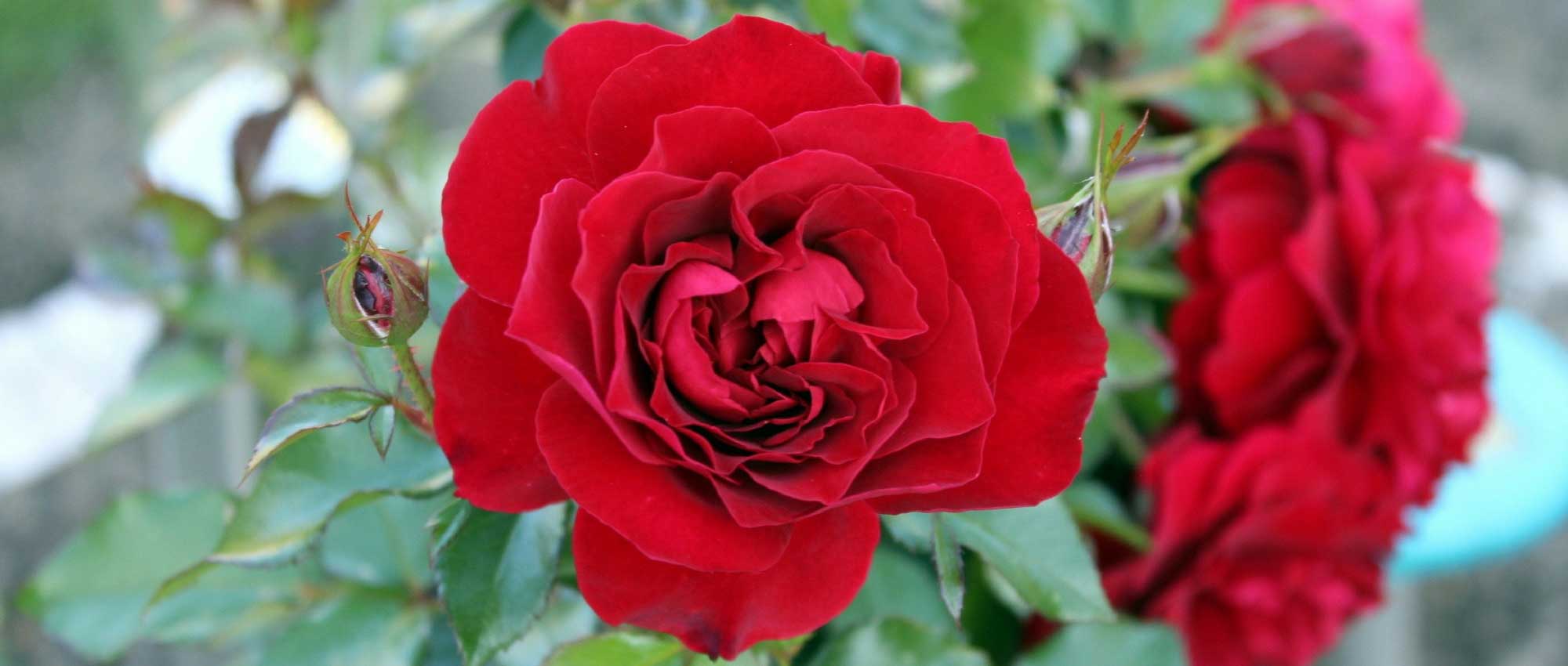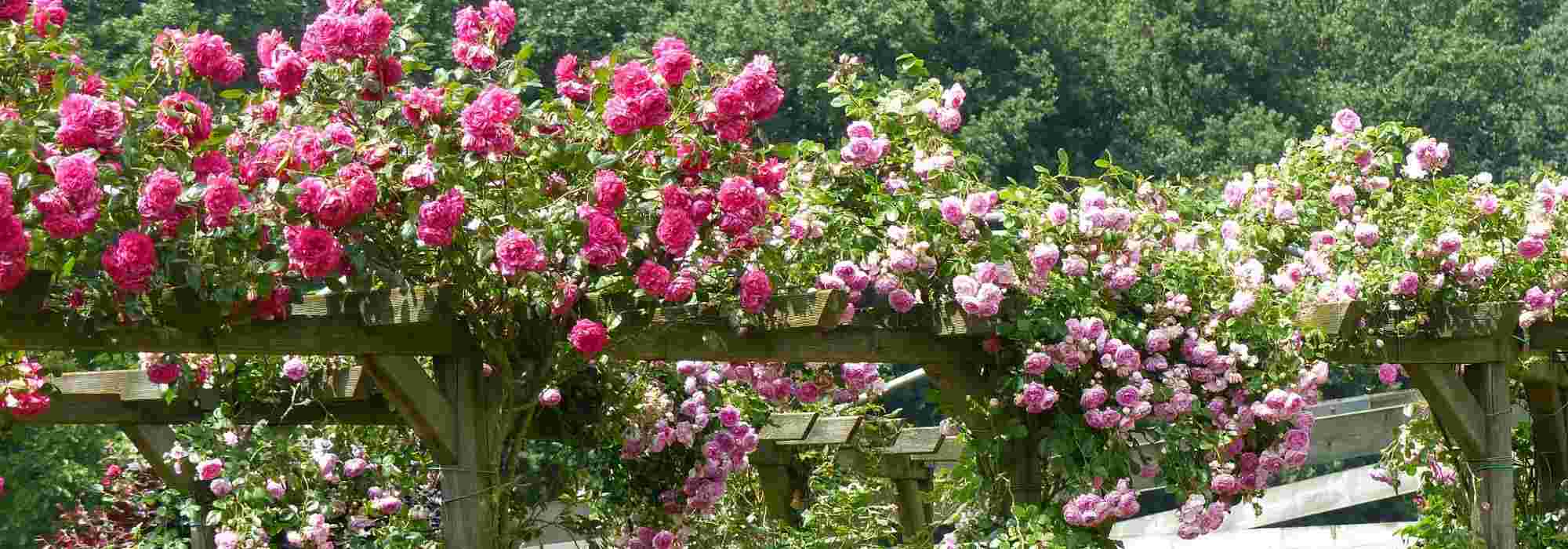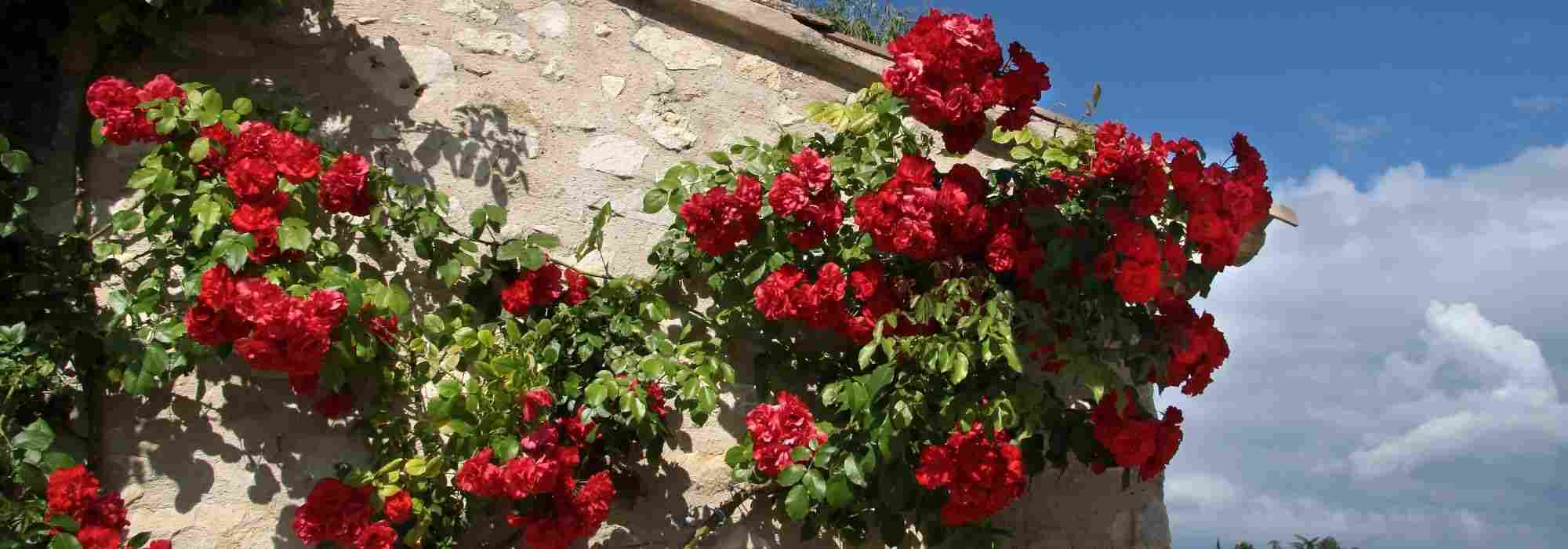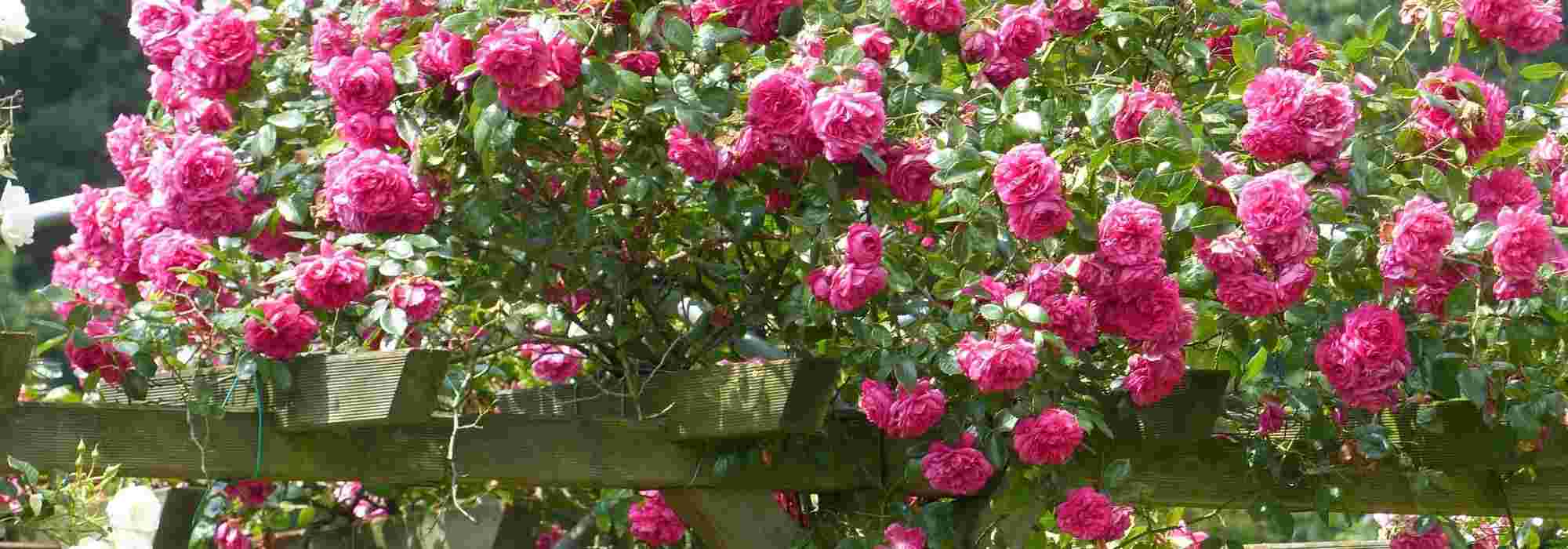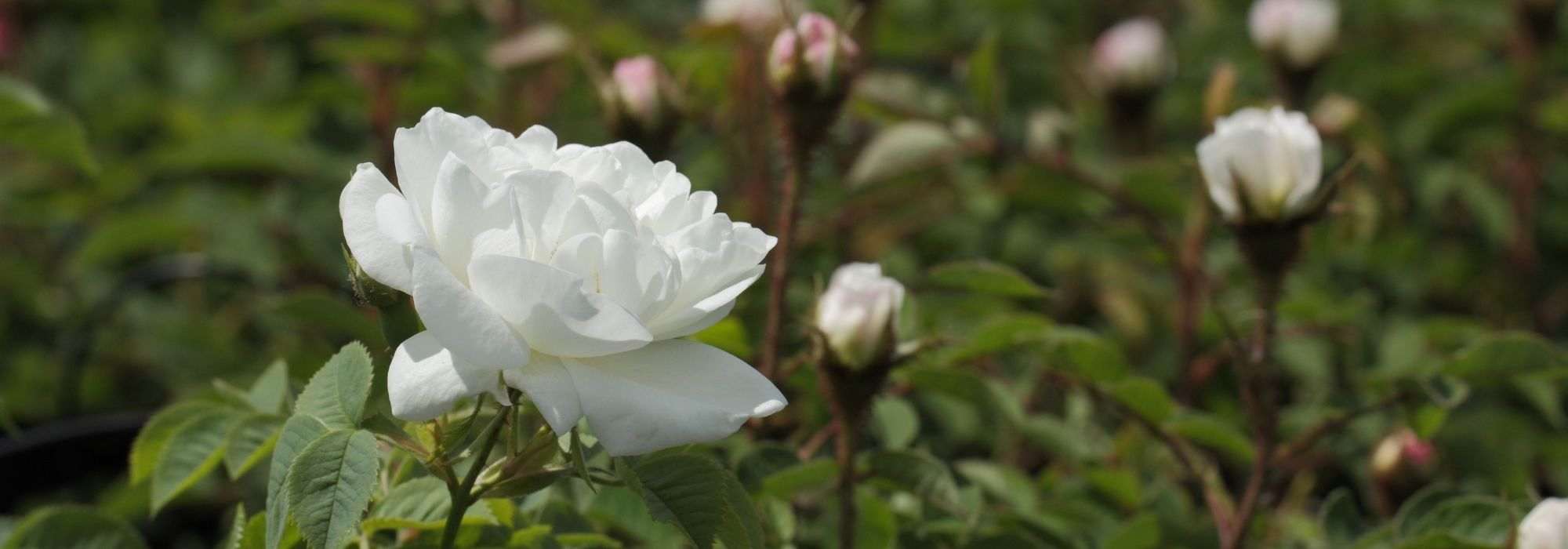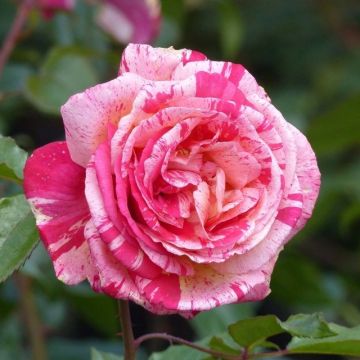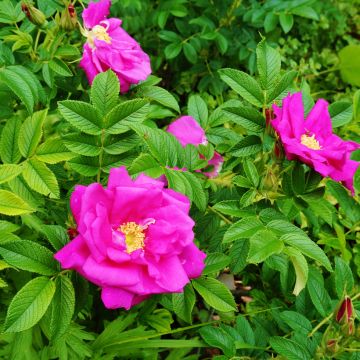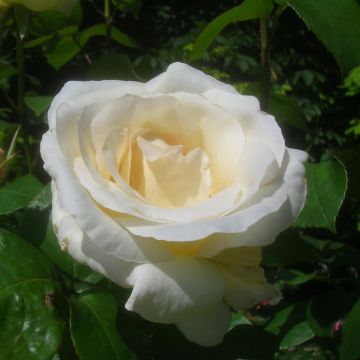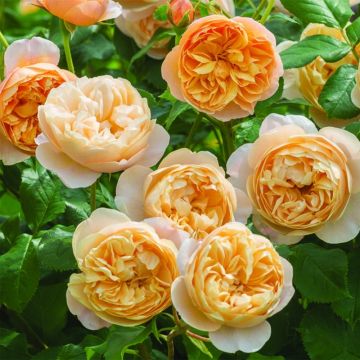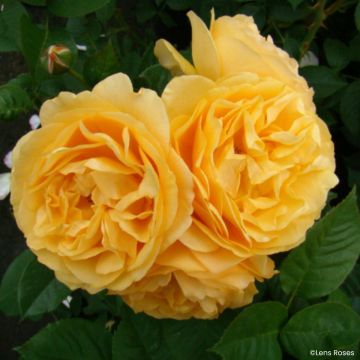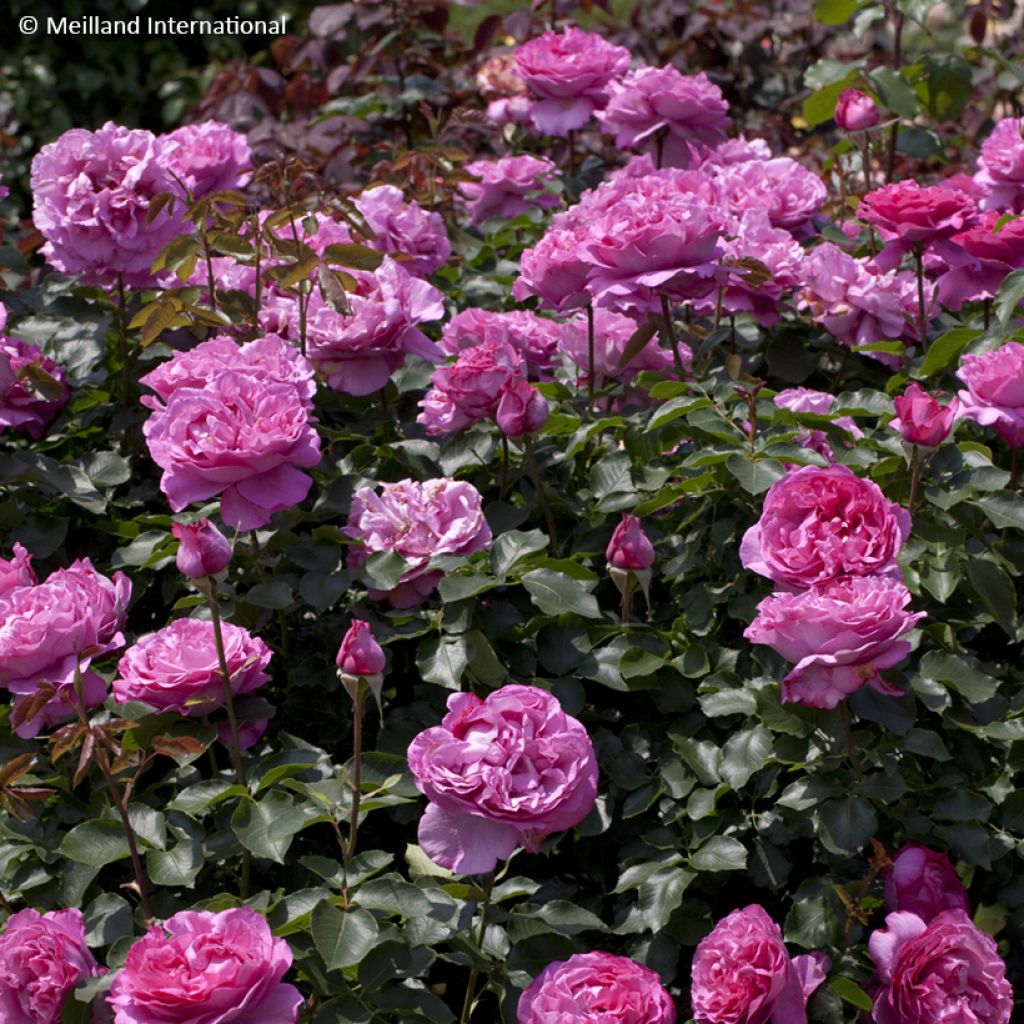

Rosa Yves Piaget Climbing - Climbing Rose
Rosa Yves Piaget Climbing - Climbing Rose
Rosa 'Keitsupiatsu' GPT YVES PIAGET®
Climbing Rose
Thank you to the team (for order preparation and shipping), the rose bush I received seems healthy. Planted in the ground, near the "Purple Voluptia" variety, I'm now patiently waiting for it to take root...(or not?).
Thierry, 22/10/2025
Special offer!
Receive a €20 voucher for any order over €90 (excluding delivery costs, credit notes, and plastic-free options)!
1- Add your favorite plants to your cart.
2- Once you have reached €90, confirm your order (you can even choose the delivery date!).
3- As soon as your order is shipped, you will receive an email containing your voucher code, valid for 3 months (90 days).
Your voucher is unique and can only be used once, for any order with a minimum value of €20, excluding delivery costs.
Can be combined with other current offers, non-divisible and non-refundable.
We guarantee the quality of our plants for a full growing cycle, and will replace at our expense any plant that fails to recover under normal climatic and planting conditions.

Description
The YVES PIAGET® Rose is a stunning variety that not only catches the eye but also delights with its fragrance. This medium-growing climber develops beautiful dark green foliage that perfectly frames its extraordinary flowering. From May to autumn, it produces large, boldly double, peony-like roses that irresistibly evoke the charm of some old-fashioned roses. To top it off, the blooms exud a powerful May rose fragrance that enchants the senses. This highly disease-resistant rose proves easy to grow in most soils in a sunny position.
The Yves Piaget 'Keitsupiatsu' Climbing Rose is a natural mutation of the variety by the same name, a hybrid tea rose with multiple awards, introduced in 1982, and boasting no fewer than five cultivars in its lineage ('Pharaon', 'La Paix', 'Chrysler Impérial', 'Charles Mallerin', and 'Tamango'). This 2014 Meilland selection produces a plant approximately 2 to 2.50 metres in height and spread. Its compound foliage of rich dark green has an almost matt, slightly satiny surface, retaining its hue throughout the season as it shows strong resistance to common rose diseases. This dark foliage is ideal for highlighting the lighter blooms which appear in spring. The first roses emerge from May, blooming abundantly until late June, followed by several waves in summer before a significant second flowering in autumn. The opening buds initially resemble carnation flowers with slightly fringed petal tips before fully unfurling to form large roses averaging 13 cm in diameter. Their creased appearance mimics certain peonies, and some blooms also feature quartered petals like some old-fashioned varieties, evoking a romantic charm... Their colour is described as Neyron pink, referencing a famous old rose, while their fragrance is that of May roses, with a subtly irresistible lemony note. They are perfect for creating magnificent, fragrant cut flowers that will brighten your home. This vigorous rose produces long branches from the base which can be trained up a trellis by arching them to encourage floriferous shoots.
The 'Keitsupiatsu' GPT YVES PIAGET® Rose is one of the best climbers for the garden—vigorous yet not overly bulky—combining a strong fragrance with exceptional flowering. Pair it with a Clematis armandii 'Apple Blossom', whose beautiful dark evergreen foliage and very early, slightly pink-tinged white flowers with an utterly delicious fragrance will precede your rose's blooms. If you prefer a floral combination, opt for a Clematis 'White Pearl' with its enchanting star-shaped white flowers that will mingle beautifully with your Yves Piaget climber.
Plant habit
Flowering
Foliage
Botanical data
Rosa
'Keitsupiatsu' GPT YVES PIAGET®
Rosaceae
Climbing Rose
Cultivar or hybrid
Planting and care
Plant your Yves Piaget Rose in a sunny position to encourage flowering. Roses are tolerant but dislike excessive lime and thrive best in deep, fertile, well-drained soil. They will adapt to any garden as long as the ground is well-prepared and sufficiently rich. To plant your rose, work the soil by breaking it up finely and adding an organic fertiliser such as dried blood or dehydrated horn at the bottom of the planting hole. Water generously after planting to eliminate any air pockets. Provide regular water for a few weeks to help with root establishment. At the end of winter, prune the side branches that have flowered back to three buds. Use this pruning opportunity to remove any dead wood and unsightly branches. Prune at a diagonal above a bud to allow rainwater to drain quickly. As flowering progresses, remove any faded flowers to stimulate the growth of new buds.
If planting your climbing rose near a living tree, the rose's root system will compete with the well-established tree roots. To avoid this, here’s a tip: plant the rose in a large container with the bottom removed, placed at the base of the tree. The tree roots won’t penetrate the container for at least a year. Remove the container in the second year, for example by cutting one side, without disturbing the rose's root system. By then, the rose will have had time to develop a deep root system and will be more resilient.
This rose is highly disease-resistant, but if it does develop slight spotting by late summer, it won’t affect its growth. These spots are not harmful to the rose—it’s a natural occurrence. Follow all our advice to address this issue and read our article: Help: My Roses Have Spots
Planting period
Intended location
Care
Planting & care advice
-
, onOrder confirmed
Reply from on Promesse de fleurs
Similar products
Haven't found what you were looking for?
Hardiness is the lowest winter temperature a plant can endure without suffering serious damage or even dying. However, hardiness is affected by location (a sheltered area, such as a patio), protection (winter cover) and soil type (hardiness is improved by well-drained soil).

Photo Sharing Terms & Conditions
In order to encourage gardeners to interact and share their experiences, Promesse de fleurs offers various media enabling content to be uploaded onto its Site - in particular via the ‘Photo sharing’ module.
The User agrees to refrain from:
- Posting any content that is illegal, prejudicial, insulting, racist, inciteful to hatred, revisionist, contrary to public decency, that infringes on privacy or on the privacy rights of third parties, in particular the publicity rights of persons and goods, intellectual property rights, or the right to privacy.
- Submitting content on behalf of a third party;
- Impersonate the identity of a third party and/or publish any personal information about a third party;
In general, the User undertakes to refrain from any unethical behaviour.
All Content (in particular text, comments, files, images, photos, videos, creative works, etc.), which may be subject to property or intellectual property rights, image or other private rights, shall remain the property of the User, subject to the limited rights granted by the terms of the licence granted by Promesse de fleurs as stated below. Users are at liberty to publish or not to publish such Content on the Site, notably via the ‘Photo Sharing’ facility, and accept that this Content shall be made public and freely accessible, notably on the Internet.
Users further acknowledge, undertake to have ,and guarantee that they hold all necessary rights and permissions to publish such material on the Site, in particular with regard to the legislation in force pertaining to any privacy, property, intellectual property, image, or contractual rights, or rights of any other nature. By publishing such Content on the Site, Users acknowledge accepting full liability as publishers of the Content within the meaning of the law, and grant Promesse de fleurs, free of charge, an inclusive, worldwide licence for the said Content for the entire duration of its publication, including all reproduction, representation, up/downloading, displaying, performing, transmission, and storage rights.
Users also grant permission for their name to be linked to the Content and accept that this link may not always be made available.
By engaging in posting material, Users consent to their Content becoming automatically accessible on the Internet, in particular on other sites and/or blogs and/or web pages of the Promesse de fleurs site, including in particular social pages and the Promesse de fleurs catalogue.
Users may secure the removal of entrusted content free of charge by issuing a simple request via our contact form.
The flowering period indicated on our website applies to countries and regions located in USDA zone 8 (France, the United Kingdom, Ireland, the Netherlands, etc.)
It will vary according to where you live:
- In zones 9 to 10 (Italy, Spain, Greece, etc.), flowering will occur about 2 to 4 weeks earlier.
- In zones 6 to 7 (Germany, Poland, Slovenia, and lower mountainous regions), flowering will be delayed by 2 to 3 weeks.
- In zone 5 (Central Europe, Scandinavia), blooming will be delayed by 3 to 5 weeks.
In temperate climates, pruning of spring-flowering shrubs (forsythia, spireas, etc.) should be done just after flowering.
Pruning of summer-flowering shrubs (Indian Lilac, Perovskia, etc.) can be done in winter or spring.
In cold regions as well as with frost-sensitive plants, avoid pruning too early when severe frosts may still occur.
The planting period indicated on our website applies to countries and regions located in USDA zone 8 (France, United Kingdom, Ireland, Netherlands).
It will vary according to where you live:
- In Mediterranean zones (Marseille, Madrid, Milan, etc.), autumn and winter are the best planting periods.
- In continental zones (Strasbourg, Munich, Vienna, etc.), delay planting by 2 to 3 weeks in spring and bring it forward by 2 to 4 weeks in autumn.
- In mountainous regions (the Alps, Pyrenees, Carpathians, etc.), it is best to plant in late spring (May-June) or late summer (August-September).
The harvesting period indicated on our website applies to countries and regions in USDA zone 8 (France, England, Ireland, the Netherlands).
In colder areas (Scandinavia, Poland, Austria...) fruit and vegetable harvests are likely to be delayed by 3-4 weeks.
In warmer areas (Italy, Spain, Greece, etc.), harvesting will probably take place earlier, depending on weather conditions.
The sowing periods indicated on our website apply to countries and regions within USDA Zone 8 (France, UK, Ireland, Netherlands).
In colder areas (Scandinavia, Poland, Austria...), delay any outdoor sowing by 3-4 weeks, or sow under glass.
In warmer climes (Italy, Spain, Greece, etc.), bring outdoor sowing forward by a few weeks.






























